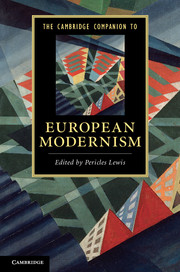3 - Germany
from PART I - “CORE” MODERNISMS
Published online by Cambridge University Press: 28 September 2011
Summary
The popular perception of German modernism in the English-speaking world is defined by an almost exclusive preoccupation with the Weimar period, those fertile fifteen years stretching from the end of the First World War in 1918 to the Nazi seizure of power in 1933. That such a thing as a popular perception of German modernism exists at all has largely to do with the allegorical subtext that we now invariably read into the period: the frenzied dance around the volcano by brilliant yet morally louche artists, and the eventual eruption of that volcano in the greatest political catastrophe of the twentieth century. Yet such a reading is deeply flawed, and not just because German modernism, like all of its European counterparts, had roots that reached back into earlier decades and an afterlife that continued long after Weimar had perished. More importantly still, it suggests that German modernism was a self-contained phenomenon, an exceptional case that went exceptionally wrong. The political development of the Weimar Republic was indeed without parallels, but the culture that accompanied it was enmeshed in transnational networks that stretched from Paris to St. Petersburg, from Oslo to Milan. The fabulous diversity of German modernism, along with all the characteristics that make it so distinctive, would not have come into being without these multifold exchanges.
- Type
- Chapter
- Information
- The Cambridge Companion to European Modernism , pp. 33 - 51Publisher: Cambridge University PressPrint publication year: 2011

